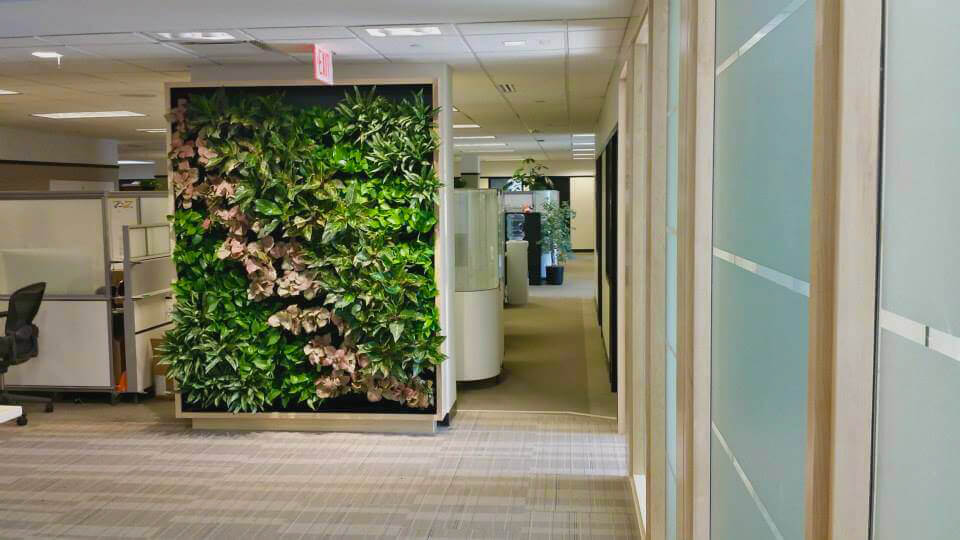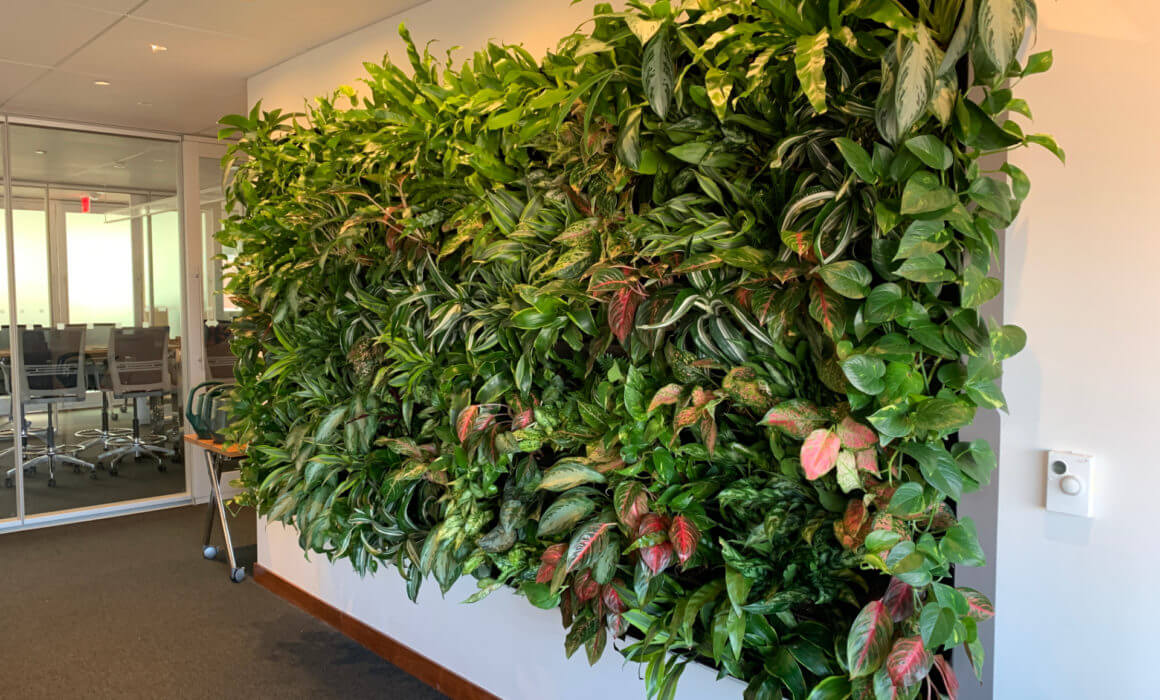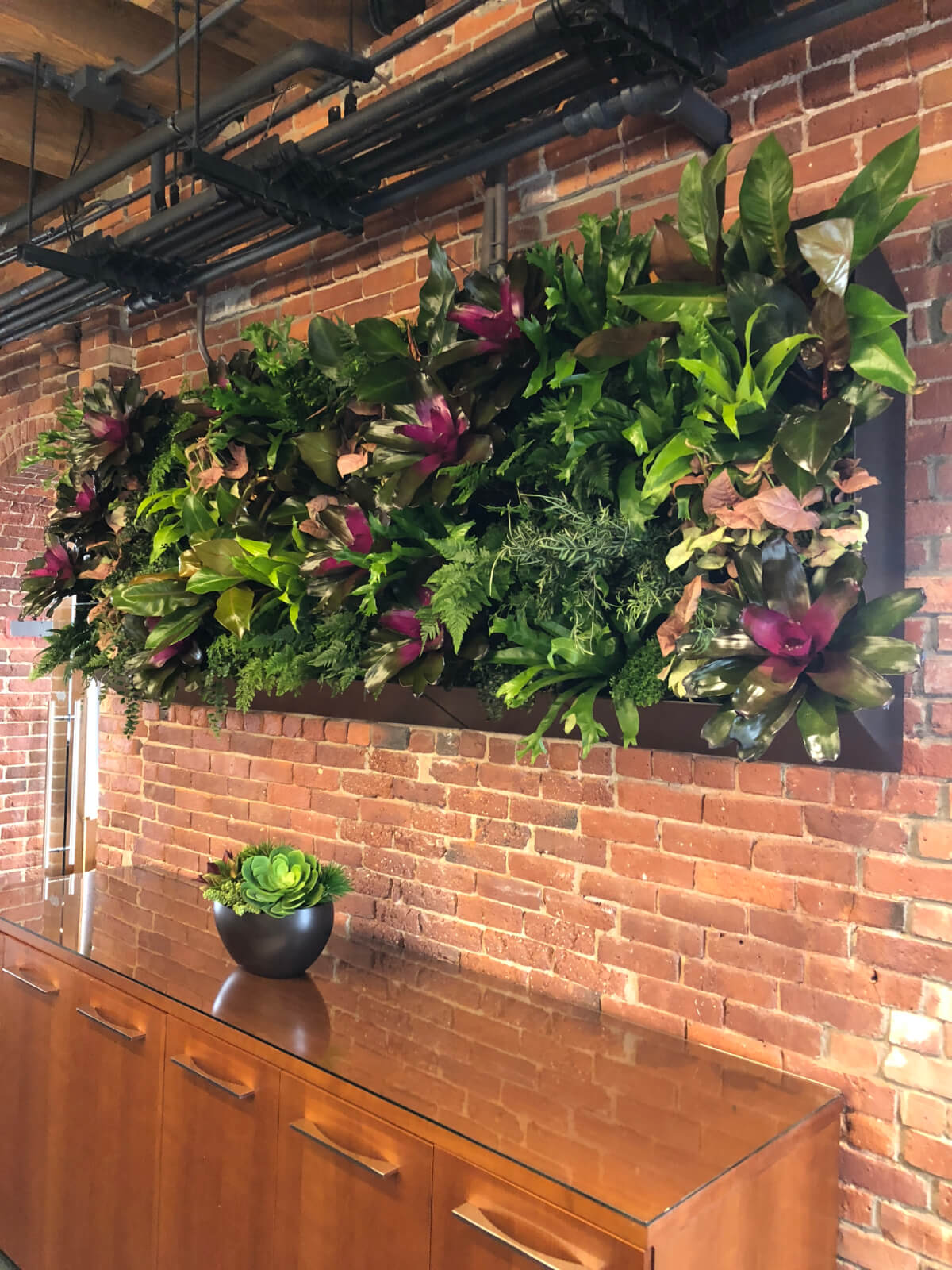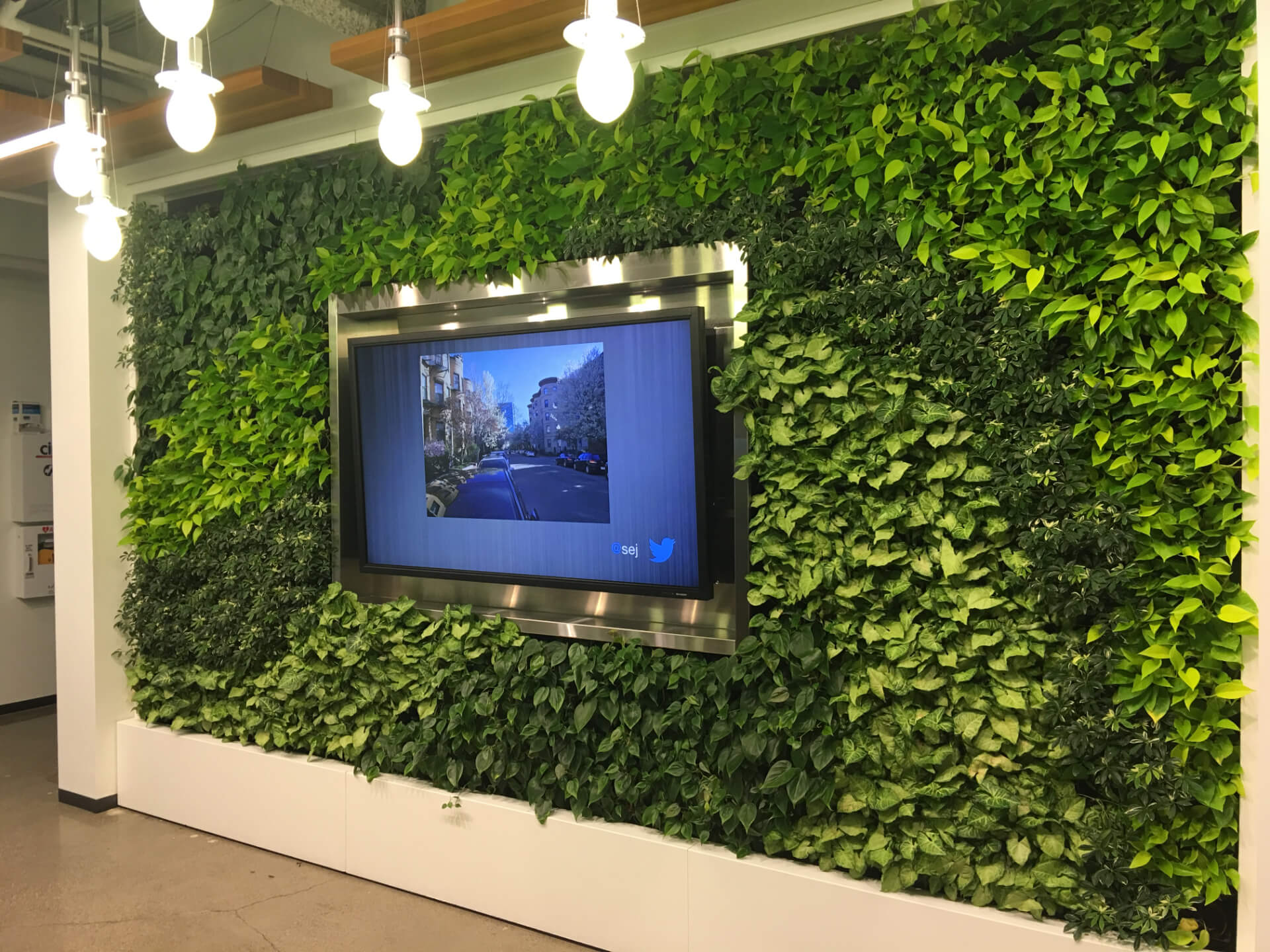How Corporate Gardens Can Improve Your Workplace
With employees returning to the office after working from home for the majority of the year, you are no doubt wondering how you can improve their working experience. Adding a corporate garden to any office can do wonders for your employees and their well-being.
Our team knows that plants can transform any space. That’s why we create stunning corporate plantscaping designs that your employees will love seeing daily. Today we will discover how corporate gardens can improve your workplace and why you should consider investing in one.
What We’ll Cover:
What Is a Corporate Garden?
A corporate garden is an outdoor space designed and maintained by a corporation or business organization to enhance the aesthetic appeal of the office building, provide a space for employees to relax, and promote environmental sustainability. Corporate gardens can take many forms, ranging from urban landscaping and vertical gardens to ground-level gardens and courtyards.
The structure of a corporate garden is typically designed to create a sense of serenity and relaxation. Walkways and paths are often installed to guide visitors through the space, while benches and seating areas are strategically placed to encourage contemplation and reflection. Water features such as fountains or small ponds can also be added to create a calming atmosphere and provide a focal point for the garden.
The aesthetic of a corporate garden is meant to promote a sense of tranquility and natural beauty. Plants are carefully selected and arranged to create a harmonious balance of color and texture. At the same time, seating areas and water features are placed to enhance the overall visual impact of the space. Whether used for a quick break or a stroll, a well-designed corporate garden can provide employees and visitors with a much-needed respite from the stresses of the workplace.
Which Types of Plants Appear in Corporate Gardens?
Commonly, corporate gardens feature a range of plant species, such as perennials, shrubs, and trees. Often, the plant selection will be chosen based on factors such as hardiness, water requirements, and aesthetic appeal. Trees like magnolias, Japanese maples, and flowering dogwoods are popular in corporate gardens, while perennials like black-eyed Susans, lavender, and daylilies are also commonly included.
Additionally, succulents, herbs, and edible plants like tomatoes and basil may be grown in corporate gardens to promote a sustainable and eco-friendly workplace. The overall aesthetic of a corporate garden will depend on the business’s branding. Still, often it will reflect the surrounding environment, be designed to be relaxing and tranquil, and complement the building’s architecture.
Improve employee and client retention with plantscaping
Corporate Gardens Reduce Stress
Corporate gardens offer your team the chance to escape their desk and connect to nature at any point of the day. Getting outside for a walk or a proper lunch break can often feel impossible. This is particularly true in high-pressure companies with endless deadlines.
Your greenscaping design will play a huge role in reducing the stress your team feels. This visual stimulation will allow employees to ground themselves and reconnect with the world around them. In time, they’ll see that their problems aren’t as bad as they thought. They’ll be able to return to work in a better frame of mind.
Corporate Gardens Improve Your Employees’ Attention Span
One surprising benefit of adding a sophisticated interior planting design is that your team’s attention span will soon increase. Urban environments are full of overwhelming stimuli. These stimuli result in your team losing the ability to focus on even the most basic tasks. We often believe that every email we receive needs a reply straight away.
However, when you’re in the presence of calming office plantscaping like living walls, you can refresh your mind and focus. This simple stimulus works to overcome the constant sensory overload we feel daily while working in our offices.
Corporate Gardens Offer Improved Air Quality
As well as the improvements to your team’s work and well-being, a huge benefit of adding interior plantscaping to any office is the improved air quality. This quality is critical for anyone who works within a large city, as pollution is a common concern for business owners.
In the long run, your employees feel more energized and engaged. The addition of nature to their office space will promote focus. We can all play our small part in overcoming the current air quality issues. Plants are a great way to combat this in any office space.
Do you need help revitalizing your corporate office?
Corporate Gardens Will Inspire Your Team
Have you ever hit a wall when working on a new project? Tunnel vision can leave you unable to come up with creative ideas. When you add a luxury interior plant design, you’ll find that your team has something to gaze at during moments of daydreaming. Nature is one of the best ways to find new ideas. If you’ve ever been on a walk when you’re feeling stressed, you’ll know the feeling.
If your team cannot leave the office and go to a nearby park at lunchtime, your corporate garden is the next best thing. They’ll enjoy admiring it from a distance and then close up. The garden offers an alternative to adding artwork to an office for inspiration.
Corporate Gardens Create a More Welcoming Environment
After spending the past year working from home, many employees struggle to return to the office. They soon became used to the cozy feeling of working from home, and it’s been quite a challenge to transition back to work all day in the workplace.
You can help to ease this transition by adding interior planting design elements that resemble plants they have at home. Our team will work with you to select some of the most popular interior plantscaping solutions. Overall, our goal is to give your employees a sense of comfort every time they walk through the door.
Corporate Gardens Absorb Background Noise
Many employees complain that they cannot concentrate in the workplace due to the endless chatter and noise in the building. With more open-plan offices than ever, the number of distractions for your team makes it almost impossible to complete the most basic tasks.
Adding an interior plant design to your office will help to absorb some of this noise and create a calmer working environment. It’s a good solution for any space with exposed concrete floors and walls. This way, you don’t have other options to overcome this challenge. You’ll want to place larger plants around the space to experience this benefit. Most importantly, you’ll want to create a place where your employees enjoy working daily.
Key Takeaways
For many reasons, a corporate garden is one of the best investments any company could make for its employees. If you’re unsure where to start when it comes to interior planting design, our team can help. We can work within your current office setup to create office plantscaping designs that will offer all the benefits we shared above.
In time, you’ll find that your employees will notice a huge reduction in their stress levels and enjoy increased productivity and creativity. Interior plantscaping is useful to offices of all shapes and sizes. It’s never too late to start making your workplace a more enjoyable place to spend time.
Contact us today to discuss Boston fabrication options for your office building.
Ready to see the benefits of a corporate garden?
Boston’s Plantscaping Specialists
Foliaire is a full-service interior and exterior greenscaping design firm in Boston’s historic South End. For over 40 years, we’ve provided award-winning urban garden and Boston fabrication services in the Boston Metro area.
We customize and plan our urban landscaping projects and interior plant design to fit your unique space and tastes. That’s how we’ve built a reputation of unparalleled style and elegance for corporate plantscaping.
In addition, we’ve received several environmental design awards and have appeared in several publications. You can find us in Architectural Digest, House and Garden, Horticulture, and Interiorscape.
Follow us on social media @Foliaire to learn more about corporate plantscaping:






Corporate Gardens Are a Social Hub
Depending on the size of your new corporate garden, you’ll soon find this becomes a central hub for social activity in your office. We’ve all spent so much of the past year in front of computers at home. Now, it’s time for everyone to reconnect.
When employees can speak to colleagues in a social setting, they’ll grow their relationships. This development positively impacts trust and teamwork, which benefits any organization. Thanks to your interior plant design, you’ll give your team a new place to interact.